Looking after your lifejacket
Lifejackets need care and maintenance. Inflatable models must be serviced regularly to ensure they work when needed. Here’s what you need to know.
Our Stay Afloat lifejacket clinics will share boating safety information at boat ramps and key events across the State.
Visit a clinic for help with maintaining your inflatable lifejacket and other boating safety topics. The clinics are free and walk-in friendly.
Find more information and upcoming dates and locations.
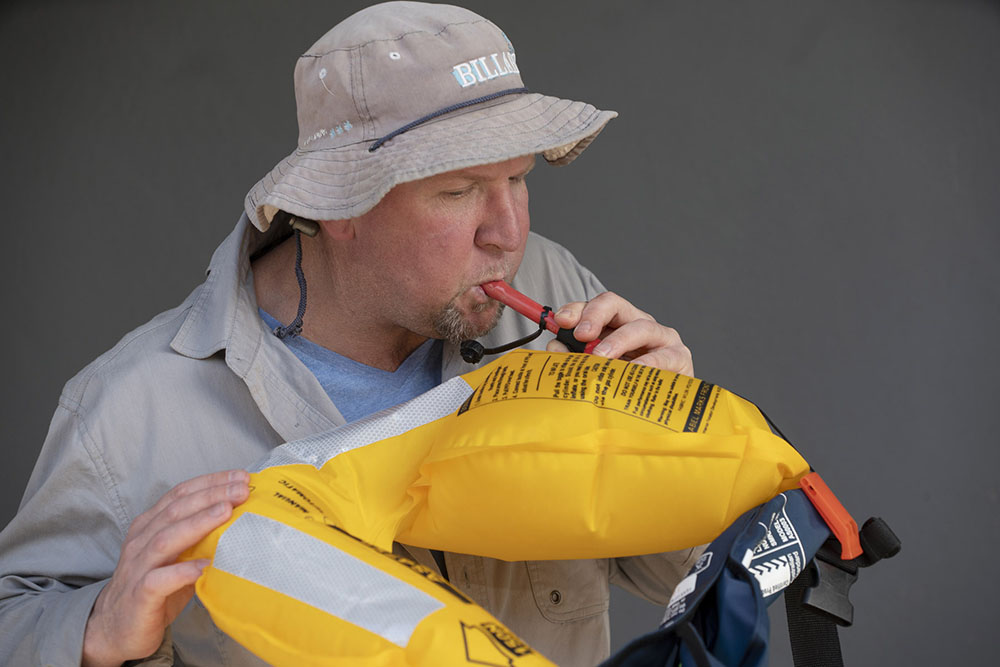
Cleaning and storing lifejackets
Lifejackets are exposed to heat, sun and salt, which means they damage easily. Look after your lifejackets by:
- rinsing off salt with fresh water and checking for damage after use
- storing lifejackets in a dry, well-ventilated area out of sunlight
- not using your lifejackets as cushions or fenders (bumpers)
- keeping lifejackets away from oil and fuel
- removing new lifejackets from their plastic wrapping before storing.
Checking foam lifejackets
Make sure your foam lifejacket is in good shape by checking it before heading out on the water. If a foam lifejacket is damaged it may not keep you afloat risking your life.
- Check the straps for any fraying or wear
- Check for any damage to the foam or covering
- Ideally try it out in water in a controlled environment like a pool. Try floating on your back to see if it keeps you afloat.
- Best practice is to replace lifejackets every 10 years.
- Remember from 1 January 2025 lifejackets that meet older Australian Standards AS 1512, AS 1499 and AS 2260 are no longer acceptable in South Australia. Upgrade to AS 4758 or approved international standard.
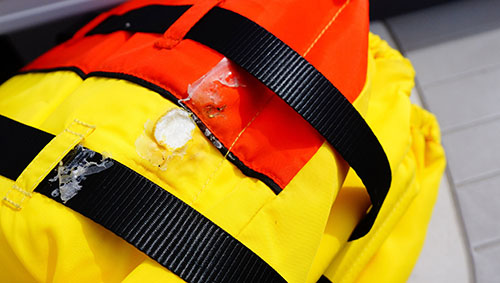
This lifejacket is damaged so should not be used
Checking and cleaning inflatable lifejackets
Inflatable lifejackets need extra care. An inflatable lifejacket can only help you if it's in working order. If it's not, you or one of your passengers could drown. Check your lifejacket before wearing and maintain it regularly in line with manufacturer's instructions. Marine Safety SA recommends maintaining (self-servicing) your inflatable lifejacket at least once a year or outsourcing the servicing to a store or service centre and after every inflation.
Check before wearing
First, check there are no visible signs of general wear and tear. Next, check that the CO2 cylinder is not pierced and is screwed in firmly (hand tight).
If you have an auto-inflating lifejacket, check the auto-inflation cartridge is hand tight and that it's still in date. Cartridges must be replaced by the expiry date shown.
Finally, check the pull cord is free and ready to use.
Cleaning after use
After use, remove the cartridge and rinse the lifejacket with fresh water. Dry the lifejacket and reconnect the cartridge before storing.
Maintaining inflatable lifejackets
Regular maintenance makes sure the bladder, inflation mechanism and CO2 cylinder are in good working order. You should maintain your lifejacket regularly in line with manufacturer’s instructions or outsource the servicing to a store or service centre. Find a service centre or store near you. Marine Safety SA recommends maintaining (self-servicing) your inflatable lifejacket at least once a year or outsourcing the servicing to a store or service centre and after every inflation.
If you cannot remember when your lifejacket was last maintained (self-serviced) or professionally serviced, we recommend you do this straight away. Keep receipts and certificates as evidence of servicing by a service centre or store. You must also keep a record of the date your lifejacket was serviced by a service centre or store or of when you have maintained (self-serviced) it yourself. There is generally a spot to write down this date on the inside of your lifejacket.
You must show the service / maintenance (self-service) record on the inside of your lifejacket if asked by a South Australian Marine Safety authorised officer or police.
Watch this video to hear how to look after your lifejacket: Life Jacket Safety - YouTube.
How to maintain inflatable lifejackets
You can maintain (self-service) a lifejacket by following the manufacturer's instructions or outsource the servicing to a store or service centre. Find a service centre or store near you.
Instructions are either supplied with the new lifejacket, printed on the lifejacket itself, or available on the manufacturer's website.
Marine Safety SA recommends maintaining (self-servicing) your inflatable lifejacket at least once a year or taking it to licensed service agent for servicing. Find a service centre or store near you. Lifejackets should also be maintained (self-serviced) or taken to a licensed service agent after every inflation. If you need assistance, please visit a Stay Afloat lifejacket clinic where a Marine Safety SA officer can help you maintain your inflatable lifejacket with our general lifejacket maintenance checklist (PDF, 108 KB).
The steps below act as a guide. Please ensure you follow the guidelines from the manufacturer of the lifejacket.
Lifejacket maintenance checklist
Step 1 - General inspection
- Check outside cover for signs of wear or damage.
- External markings should reflect:
- AS 4758 standard
- maintenance and donning instructions
- indicate manual/auto function
- inflation instructions.
- Check stitching, buckles and closures to confirm all intact and working.
- Check bladder is not damaged.
- Check reflective tape is stuck down and not peeling away.
- Check oral inflation tube and valve are in good condition.
- Check whistle is securely attached and works when blown.
- Check integrity of all straps (including crotch straps, if fitted), stitching and buckles.
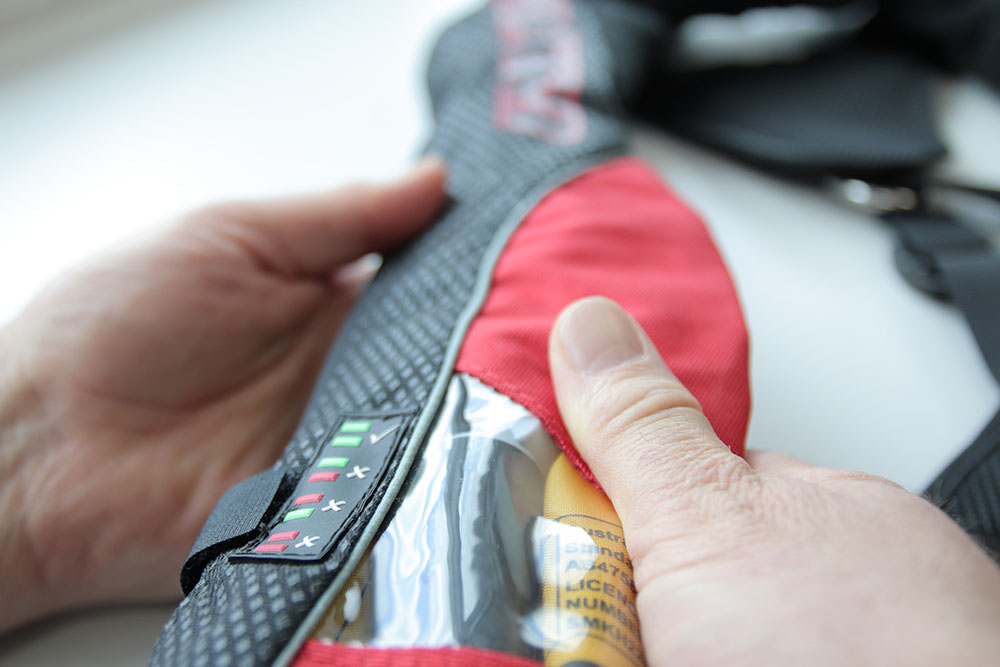
Check all fastenings are working
Step 2 - Cylinder inspection
- Check for signs of corrosion.
- Check end is intact and not punctured.
- Weigh cylinder. Actual weight should be within +/-2g of the weight engraved on cylinder.
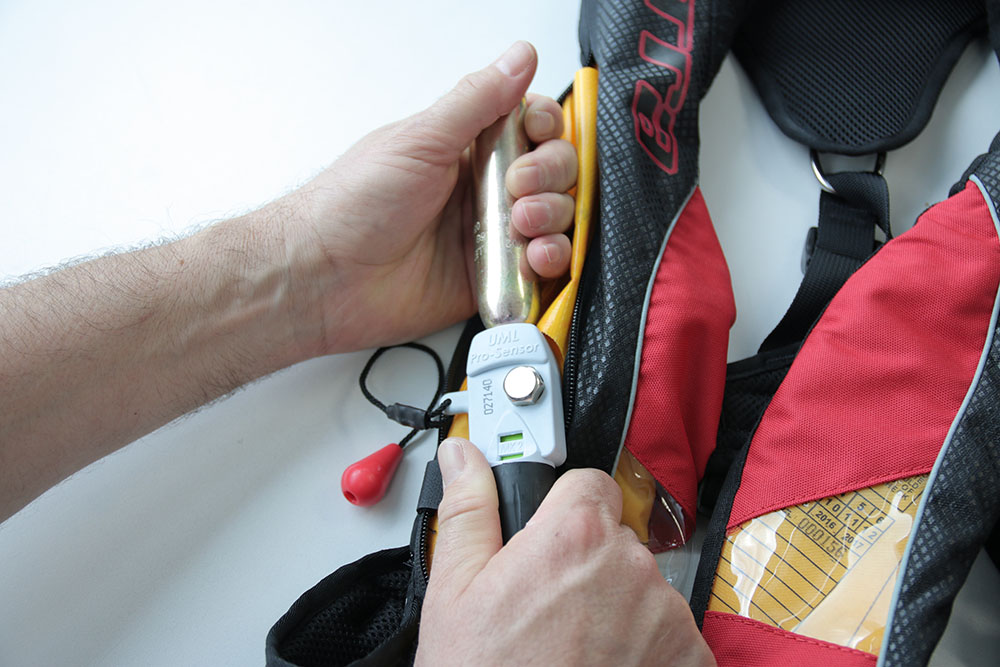
Remove the cylinder to check its weight and condition
Step 3 - Manual firing mechanism
- Check mechanism is unhindered.
- Check for corrosion on metal components.
- Check green indicators (replace green clip if necessary).
- Check actuator cord and toggle in good condition and well secured.
Step 4 - Auto inflate mechanism
- Unscrew water sensor cartridge.
- Check it is clean and dry.
- Check cartridge expiry date.
- Screw cartridge into firing mechanism.
- Check lower indicator on body of inflator is green.
Step 5 - Hammar inflator
- Check expiry date.
- Check indicators are green.
Step 6 - Bladder test
- Inflate bladder using the oral tube. Take it home and leave for 12 hours or overnight.
- Check for loss of pressure.
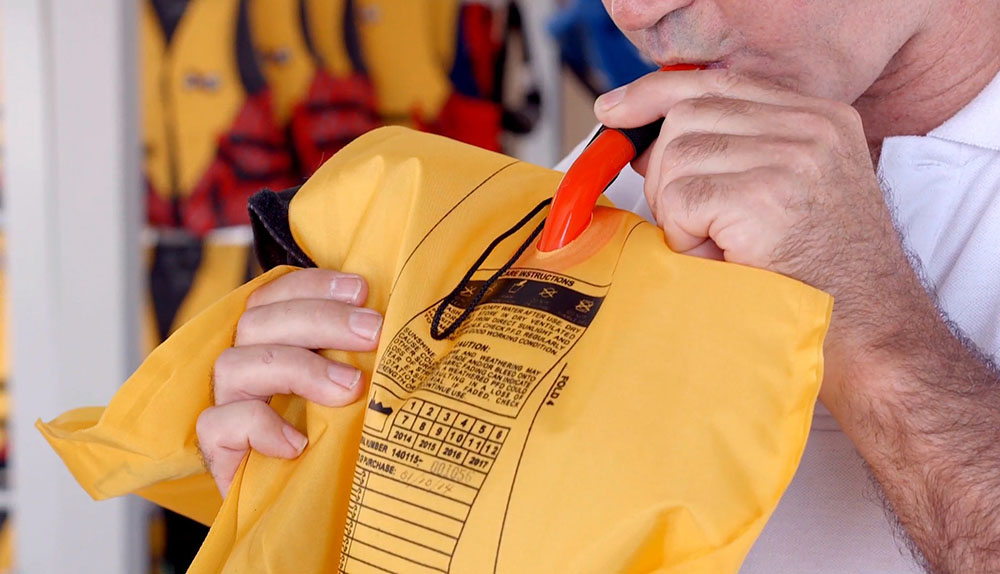
Inflate the bladder with air to check it does not lose pressure
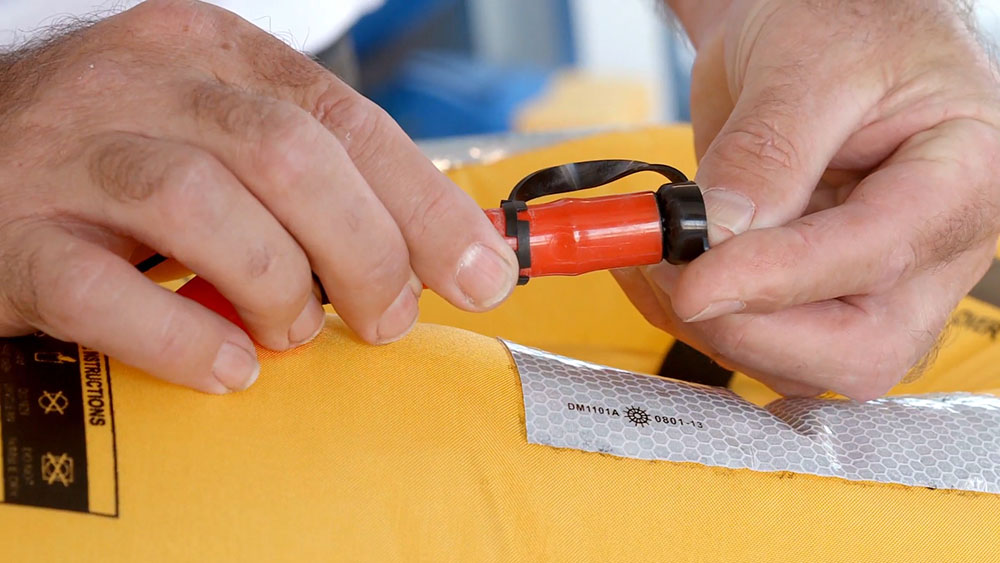
After you’ve checked the bladder, deflate it using the cap on the tube
Step 7 - Final checks/ready to use again
- If the lifejacket has passed all checks, record date completed on the lifejacket in permanent marker.
- Maintaining (self-servicing) should occur annually for two years.
- Third-year service should be carried out by an accredited provider.
Find accredited lifejacket service providers.
- Re-pack lifejacket as per manufacturer’s guidance.
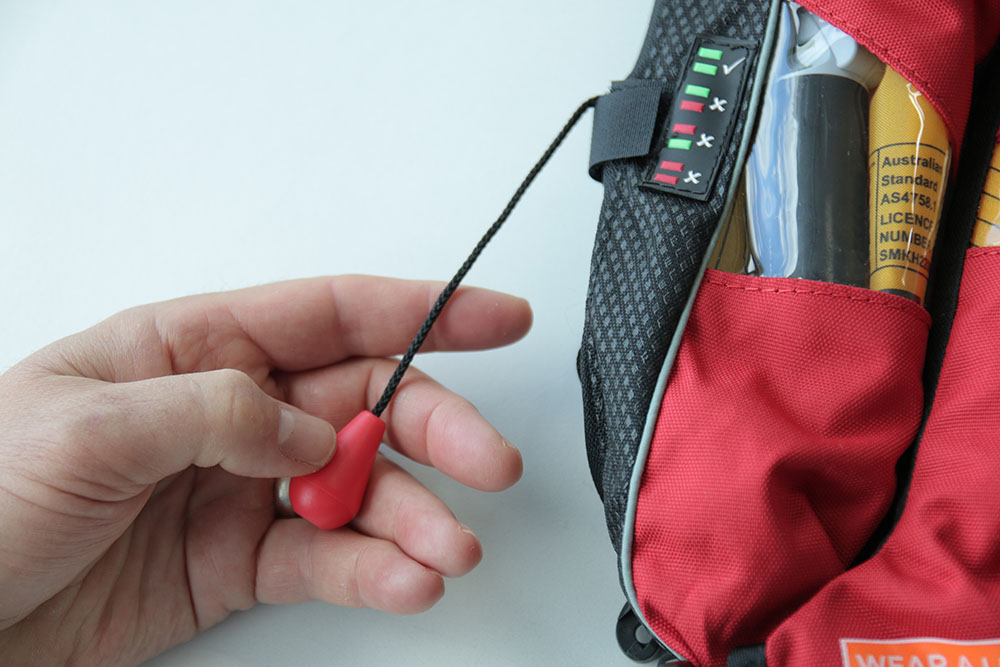
When you repack the lifejacket, make sure the pull cord is accessible
If your lifejacket is unserviceable, it must be disposed of by:
- cutting up the lifejacket (so it cannot be reused)
- putting it in general waste.


